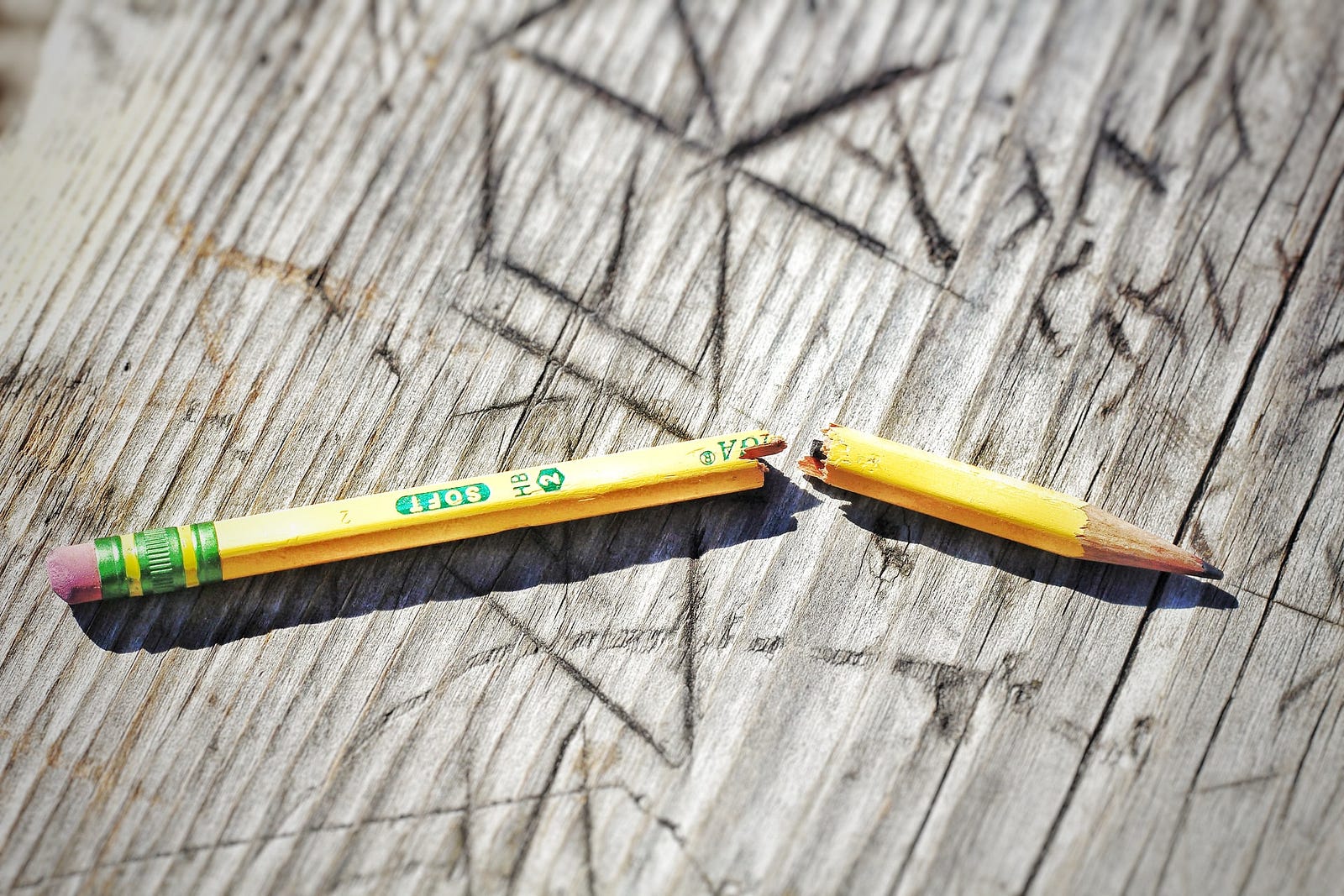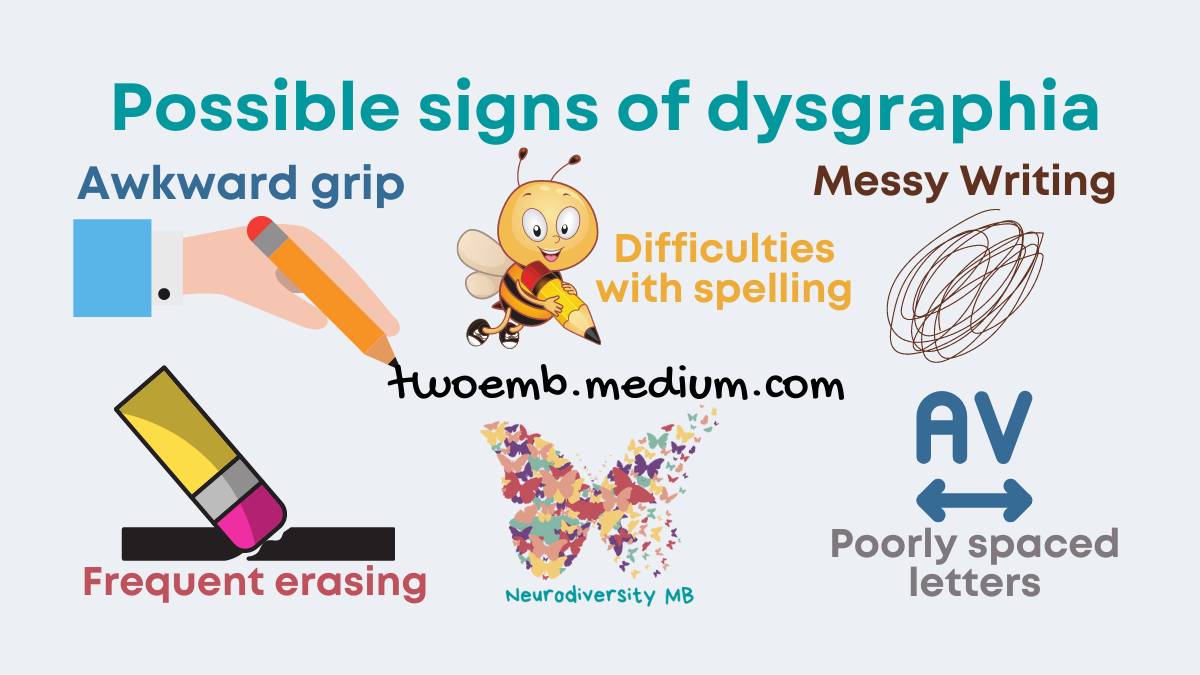Why you or your child might hate handwriting and printing
 Photo by Joshua Hoehne on Unsplash
Photo by Joshua Hoehne on Unsplash
I’d like to tell you a story
I remember one day when my son was in grade one (6 years old). I was informed he had hidden under his desk, refused to do his schoolwork, and then ripped up the worksheet he had been given.
His teacher was apparently taken aback, and couldn’t quite understand why this had happened.
Huh.
Well, hindsight is 20/20, but it seemed pretty obvious to me. At the time, my son was being assessed for ADHD by the school psychologist, as well as being assessed by the division’s occupational therapist.
We had expressed to the school that he was reluctant to write, despite having exceptional reading and comprehension skills. We figured it was a combination of fine motor and executive functioning challenges, but were waiting for the formal reports.
On the day in question, the class had been asked to do a fairly long (for 6-year-olds) writing assignment. When my son resisted, the teacher insisted. Backed into a figurative corner, my son took shelter, trying to hide under his desk.
Of course, when children don’t comply, we tend to label them “defiant”, or say they’re refusing to cooperate. Maybe on the surface, yes, but it turned out my son’s IQ was in the 99th percentile, while his visual-motor integration (VMI — more on that later) was way down in the tenth percentile.
This significant disparity between his IQ and VMI scores are an example of asynchronous development, which is very common in gifted and twice exceptional children (kids who are gifted and have a disability).
The reason I used this specific example is because I want to focus on specific learning disorders of written expression, one of which is commonly referred to as dysgraphia.

This article was originally posted in Invisible Illness.
Dysgraphia
Weakness in fine motor skills is an extremely common difficulty amongst those of us who are Autistic and/or have ADHD. It is estimated that more than 60% of ADHD and Autistic people have dysgraphia, a disorder of written expression; and over 90% of us have weaknesses in our fine motor skills.
There are two broad categories of disorders of written expression: those that stem from primarily physical deficits, and those that stem primarily from neurological differences — although they’re all a bit of both, as one cannot entirely separate one from the other.
Motor dysgraphia
Motor dysgraphia is said to be caused by hindrances in fine motor coordination, visual perception, and proprioception.
Fine motor coordination and visual perception work together to form our visual-motor integration (VMI). This is effective, efficient communication between our eyes and our hands, a specific type of hand-eye coordination.
Children with ADHD tend to have significantly poorer VMI when compared to neurotypical children, which is one of the factors contributing to handwriting difficulties.
Proprioception is how the muscles and joints in our body communicate their position and location to our brain, in order to coordinate movement and adapt to our environment.
People with ADHD frequently have challenges with proprioception, which can lead to improper or awkward grip, as well as pushing too hard or too lightly when writing.
Linguistic dysgraphia
Linguistic dysgraphia is related to language processing deficits, particularly inefficiencies in the graphomotor loop, in which our phonological memory communicates with our orthographic memory.
Phonological memory relates to sounding out words, and remembering how the word sounds in your mind. Orthographic memory relates to remembering how to form each of the letters, and recognizing whether the shape of a word looks correct (i.e. spelling, capitalization, and punctuation).
The graphomotor loop is the relationship between these two types of memory and how they work together to aid us in writing, spelling, and grammar.
Neurodivergent people, specifically Autistic and ADHD folks, often struggle with deficits in working memory, which is the ability to keep information in mind while working with it.
Preliminary research has shown that children with ADHD tend to struggle more with motor dysgraphia, whereas Autistic youth are more likely to struggle with linguistic dysgraphia related to executive functioning issues.
Of course, those are only preliminary studies, and most people who struggle with handwriting will have challenges in both areas.

Executive functions
Neither executive dysfunction, autism, ADHD, nor learning disabilities have any relation to intelligence. Someone can have any or all of the above and still be highly intelligent.
With respect to writing, this requires a lot of executive functioning skills:
Internally developing a sentence or idea.
Separating the idea into manageable chunks to write them down.
Using working memory to hold the idea in mind while writing it out.
Checking that the completed sentence matches the original thought.
All of that, in addition to the fact that our fine motor skills continue to develop well into our teens, makes the process of writing quite an arduous task.
So if a child is resistant to completing a lengthy writing assignment, here are some ways to help:
Break it down into more manageable parts, providing breaks in between.
Allow the child to fill in the blanks instead of having to write full sentences, gradually increasing the amount of writing they are expected to do.
Provide fun activities that the child enjoys doing that also help improve abilities such as fine motor skills and working memory.
Offer alternatives when possible, allowing the child to experiment with various formats for demonstrating their knowledge.
Last, but certainly not least, don’t label children based on their surface behaviour. At 6 years old, there was no way my son could have known that he had ADHD and dysgraphia — even the experts hadn’t figured that out yet.
All he knew was that he hated writing and his teacher was trying to force him to do it. When a child is resisting, don’t assume they’re being intentionally willful or defiant, because human behaviour is so much more complex than that.
© Jillian Enright, Neurodiversity MB
Related Stories
ADHD: The Gift That STILL Keeps On Giving!
When you join medium, as a member you’ll have access to unlimited reads for only $5 per month. If you use my referral link, I’ll earn a small commission, and you’ll earn my undying gratitude.
References
Chung, P. J., Patel, D. R., & Nizami, I. (2020). Disorder of written expression and dysgraphia: definition, diagnosis, and management. Translational pediatrics, 9(Suppl 1), S46–S54. https://doi.org/10.21037/tp.2019.11.01
de Carvalho, C. A. F., de Kida, A. S. B., Capellini, S. A., de Avila, C. R. B. (2014). Phonological working memory and reading in students with dyslexia. Frontiers in Psychology, 5, 746. https://doi.org/10.3389/fpsyg.2014.00746
Farhangnia, S., Hassanzadeh, R., Ghorbani, S. (2020). Handwriting Performance of Children with Attention Deficit Hyperactivity Disorder: The Role of Visual-Motor Integration. International Journal of Pediatrics, 8(11), 12317–12326. https://doi.org/10.22038/ijp.2020.47633.3857
Fenollar-Cortés, J., Gallego-Martínez, A., Fuentes, L. J. (2017). The role of inattention and hyperactivity/impulsivity in the fine motor coordination in children with ADHD. Research in Developmental Disabilities, 69, 77–84.
https://doi.org/10.1016/j.ridd.2017.08.003
Fietsam, A. C., Tucker, J. R., Kamath, M. S., Huang-Pollock, C., Wang, Z., Neely, K. A. (2022). Manual dexterity and strength and in young adults with and without Attention-Deficit/Hyperactivity Disorder (ADHD). Neuroscience, 766, 136349. https://doi.org/10.1016/j.neulet.2021.136349
Hong, S. Y., Jung, N. H., & Kim, K. M. (2016). The correlation between proprioception and handwriting legibility in children. Journal of physical therapy science, 28(10), 2849–2851. https://doi.org/10.1589/jpts.28.2849
Kutscheidt, K., Dresler, T., Hudak, J. et al. (2019). Interoceptive awareness in patients with attention-deficit/hyperactivity disorder (ADHD). ADHD Attention Deficit and Hyperactivity Disorders 11, 395–401. https://doi.org/10.1007/s12402-019-00299-3
Mayes, S. D., Breaux, R. P., Calhoun, S. L., & Frye, S. S. (2019). High Prevalence of Dysgraphia in Elementary Through High School Students With ADHD and Autism. Journal of Attention Disorders, 23(8), 787–796. https://doi.org/10.1177/1087054717720721
Rosenblum, S., Ben-Simhon, H. A., Meyer, S., Gal, E. (2019). Predictors of handwriting performance among children with autism spectrum disorder. Research in Autism Spectrum Disorders, 60, 16–24. https://doi.org/10.1016/j.rasd.2019.01.002

